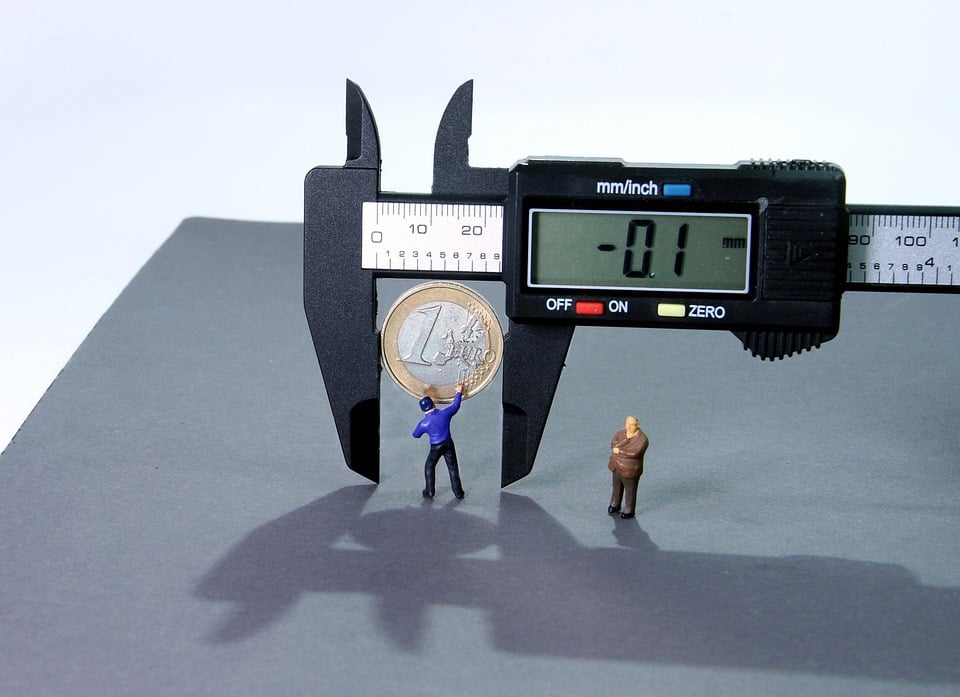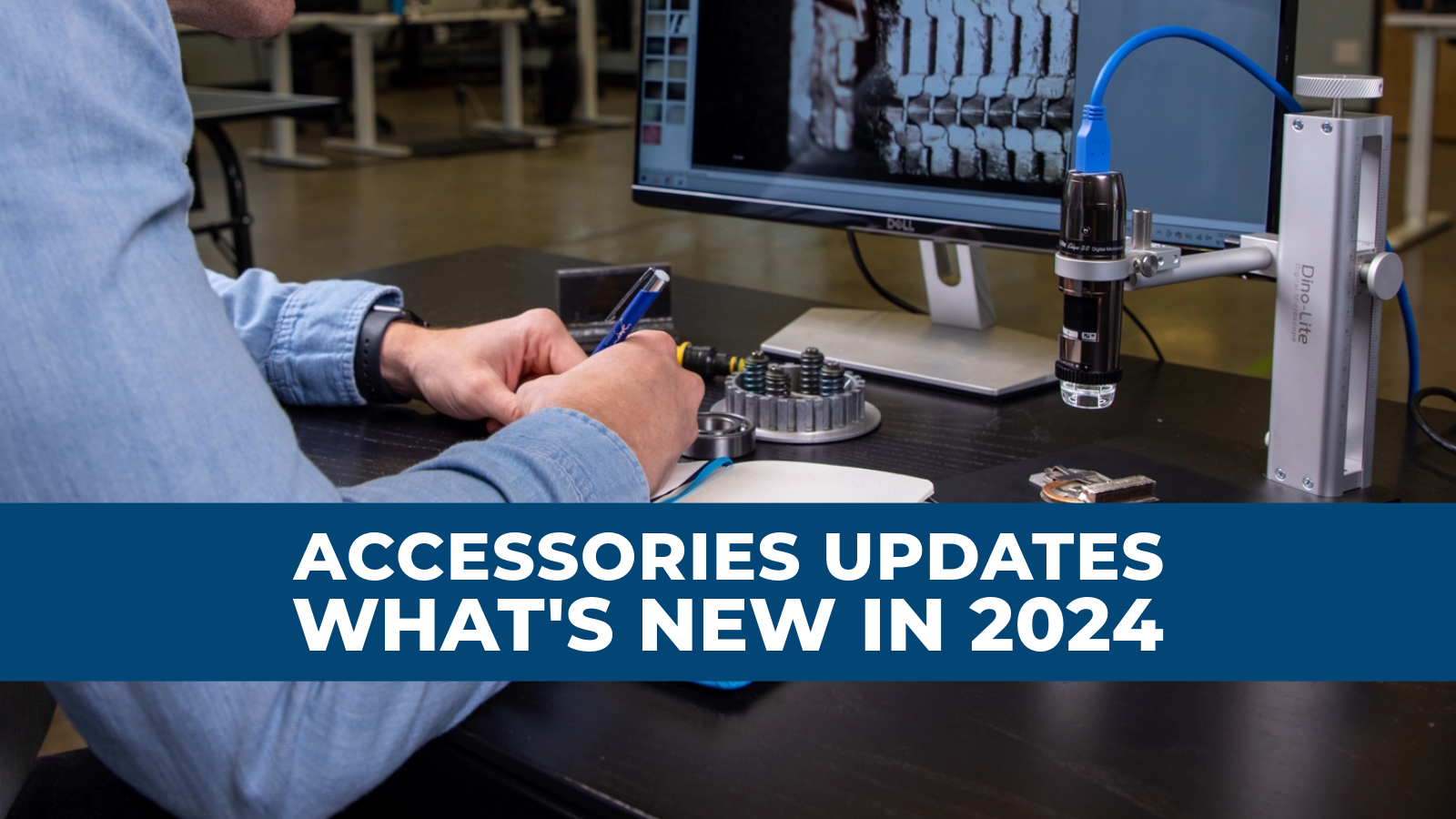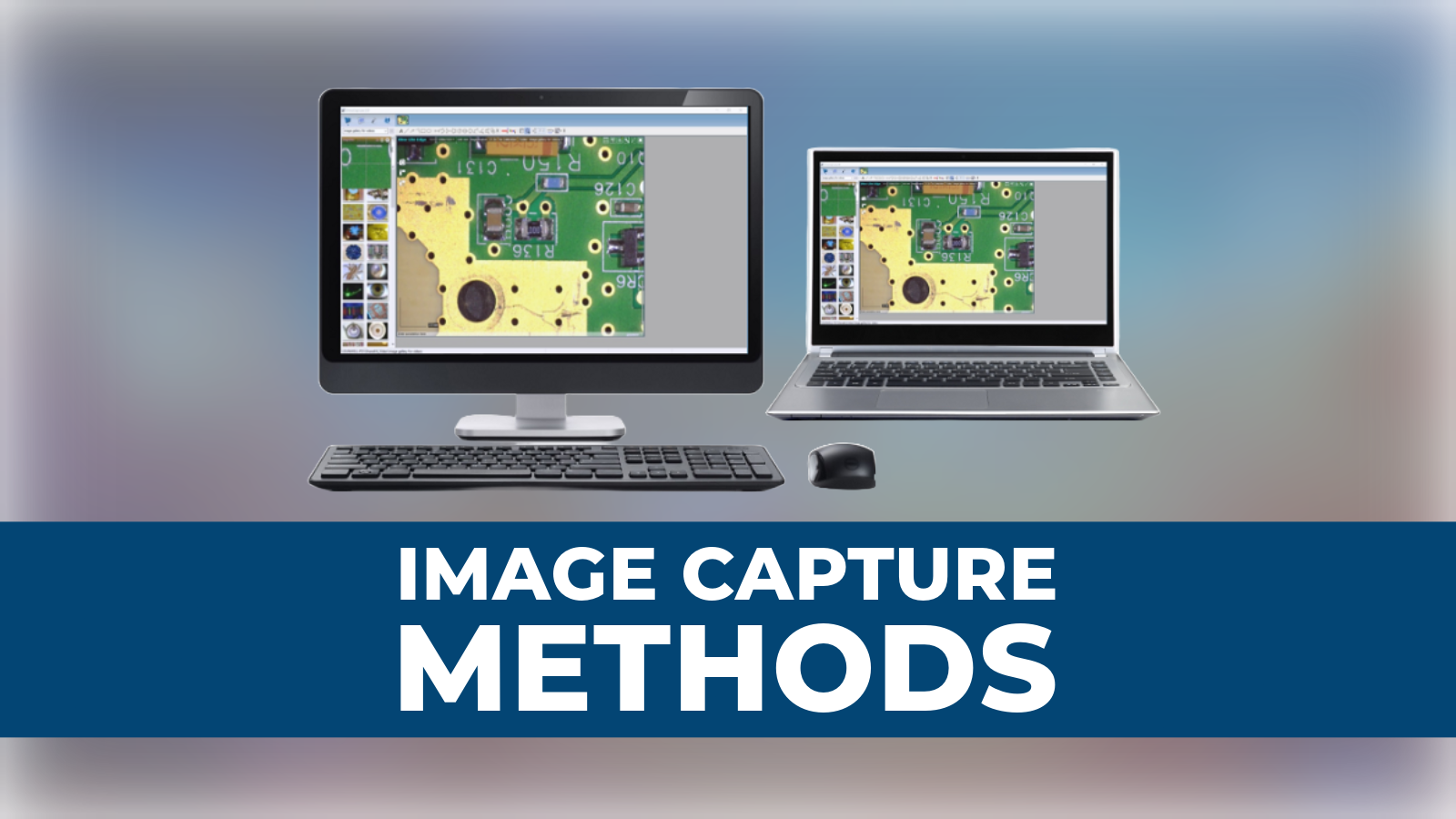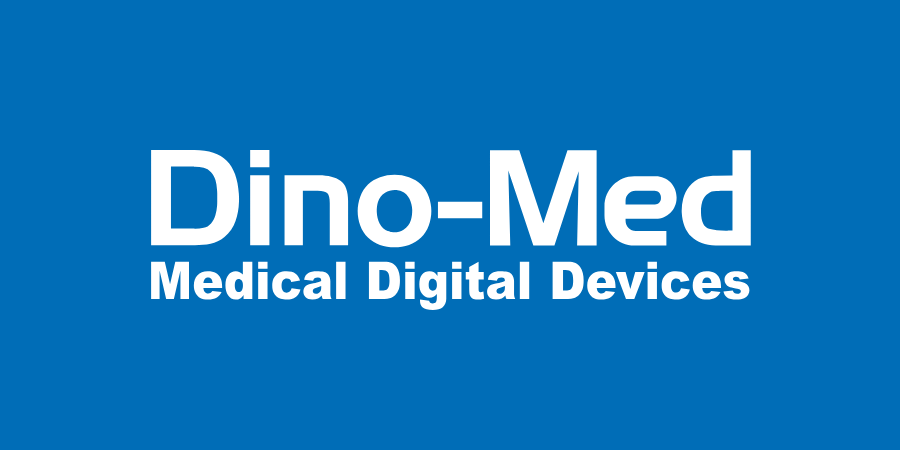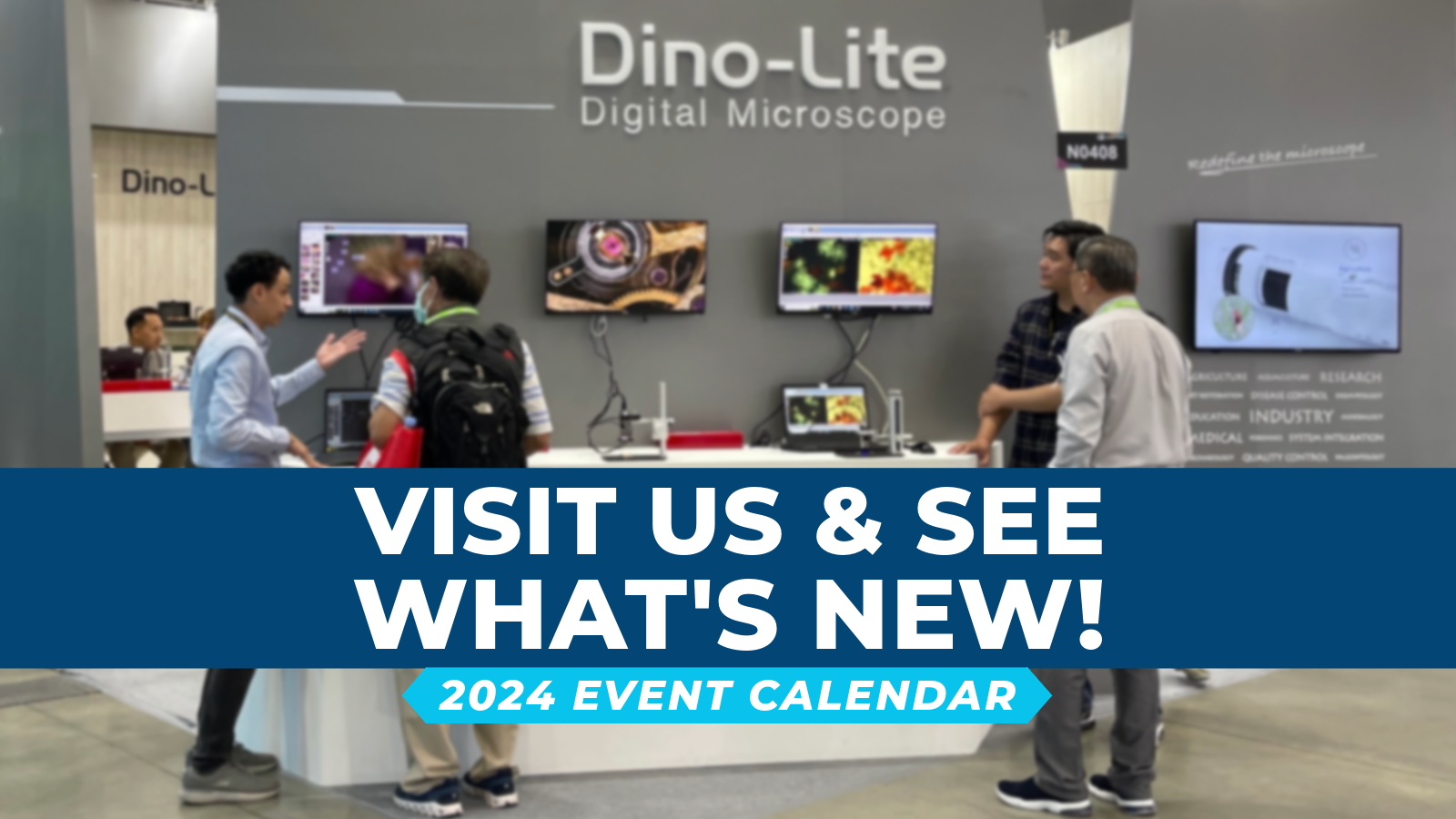Dino-Lite digital microscopes are an indispensable tool for researchers, scientists, and professionals who rely on precise measurements in their work. These microscopes are known for their accuracy and ease of use, making them an ideal choice for a wide range of applications. One of the key features of Dino-Lite microscopes is their calibration system, which ensures that measurements are accurate and reliable. With the included software and calibration targets, users can quickly and easily calibrate their microscope for optimal performance. Whether measuring big or small, Dino-Lite simplifies the process with features like AMR and QR calibration, making it an essential tool for any researcher or professional
Many Dino-Lite microscopes and Dino-Eye camera models include 2-dimensional measurement features. These features are available on most USB models. A complete selection of models with measurement capabilities can be found here.
The Direct-to-TV models (HDMI, VGA, RCA) do not include measurement features.
Dino-Lite microscope measurements are user-calibrated and for reference only. Currently, we are unaware of any institutions that will certify variable magnification digital microscope’s calibration for measurements. However, it is possible to calibrate measurement-capable Dino-Lite models with a certified calibration target from a third party. Instead of using the Dino-Lite provided courtesy reference calibration target, some users may purchase a certified and/or traceable calibration target from a third party.
Here are some third-party external sources that we are aware of:
- https://www.maxlevy.com/category/microrules.html
- https://www.edmundoptics.com/p/reticle-calibration-stage-micrometer-nist-traceable/16039/
The measurement features are used by entering the magnification power into the software (automatically done with models that include AMR) then selecting the appropriate tool from within the software and clicking on points on the image. The software magnifying tool and keyboard arrows can also be used to more precisely adjust lines by one pixel at a time. Measurement tools include line, continuous line, fixed-length line, edge-detection line, point-to-line, polygon, circle, arc, angle, grid, and several others.
A properly calibrated microscope is crucial for achieving accurate and reproducible measurements, making it an essential component of any workspace or laboratory. Accurate calibration ensures that the Dino-Lite produces consistent and reliable images and that measurements of size and distance are accurate. Calibration is especially important when comparing data collected on different Dino-Lite microscopes, as well as when comparing data collected over time on the same Dino-Lite.
There are several steps involved in the Dino-Lite calibration process, which may vary depending on the Dino-Lite microscope model being used.
Manual Calibration
To calibrate manually, use the included calibration target or another item of trusted known dimensions. Select the “Calibration” button on the right side of the toolbar and follow the on-screen instructions. Here is a video tutorial for calibration.
Automatic Calibration
Using any USB or wireless Edge Series Dino-Lite with the QR codes on the CS-41 calibration target, you can speed up the calibration process. See how in this video or follow the steps listed in this link.
Measurement accuracy is affected by:
(1) correctness of magnification (2) the measurement setup and (3) operation of the process
Here are some tips for ensuring accurate calibration and measurement:
- Calibration methods (as seen above)
- Setup Tips:
- Improve contrast by selecting the right background and lighting.
- Using a light or dark background to contrast with your part can be beneficial.
- Some Dino-Lite models can adjust their exposure.
- Operation tips:
- Use enough magnification such that the measured dimension does not appear small in the preview screen.
- Keep in mind that the lower the magnification is, the less accurate the measurement might be.
- You can see how magnification power corresponds to the field of view here: Field of View Gallery
The magnification values provided on the Dino-Lite device itself are given as a reference. For accurate measurement results, a calibration target is included with all models that support measurement features. The calibration feature in the software should be used together with the calibration target prior to performing measurements.
The Dino-Lite is an affordable tool designed to offer a broad range of features for multiple applications. However, when calibrated properly, accuracy results can often match precision measuring equipment.
Accuracy depends on several factors including magnification, screen resolution, and proper calibration. Since Dino-Lite microscopes provide variable magnification, the tolerance will be different depending on what magnification you are using.
For example, if you are using a standard magnification model at 220x with a screen resolution of 1920×1080, you can expect a measurement increment of about 0.0015mm. If you are using a high magnification model at 900x with the same screen resolution, you can expect a measurement increment of about 0.4um. For more accuracy examples, please see the images below.
60x
Horizontal FOV [accuracy]: 9.564mm [+/- 0.192mm]
One pixel increment (one keyboard arrow press): ~5.4um
220x
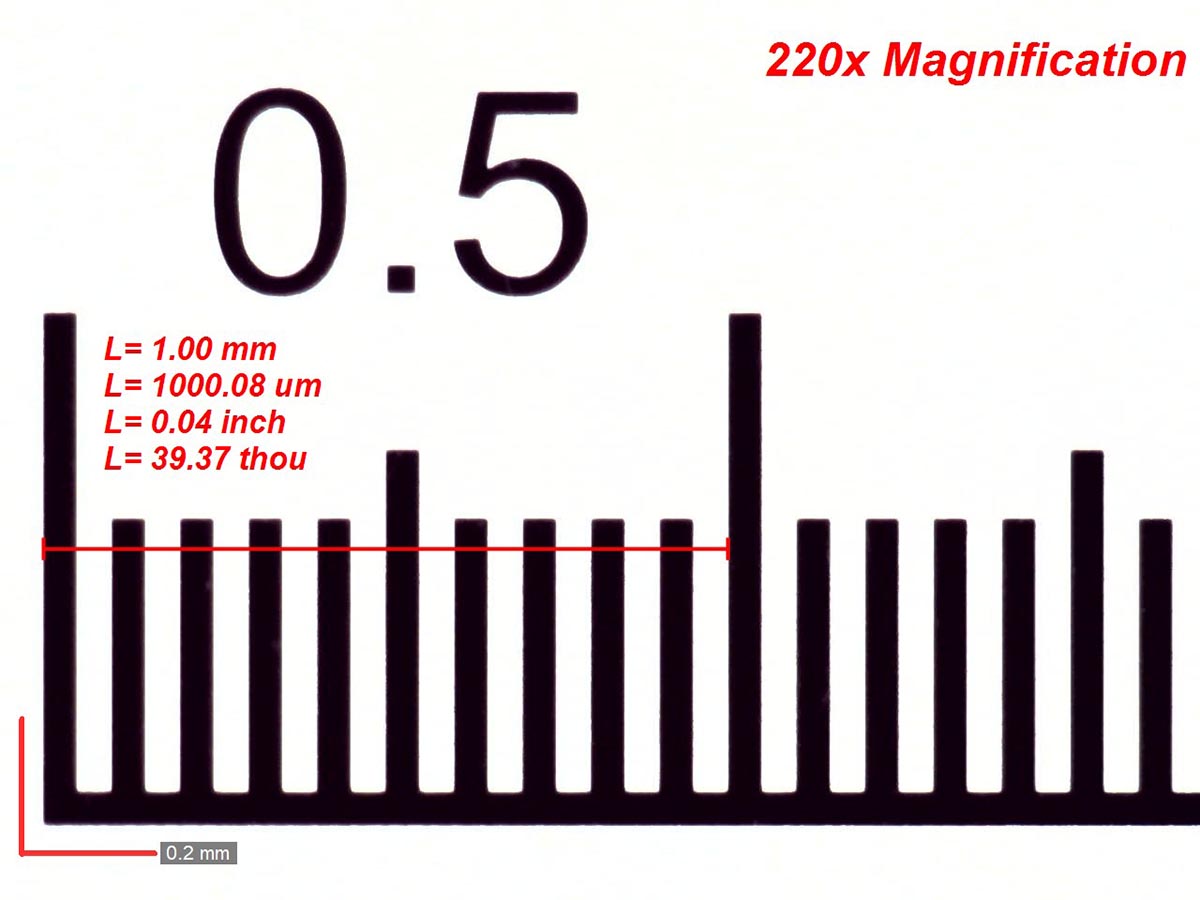
Horizontal FOV [accuracy]: 2mm (2000um) [+/- 0.04mm (40um)]
One pixel increment (one keyboard arrow press): ~1.5um
900x
Horizontal FOV [accuracy]: 400um [+/- 8um]
One pixel increment (one keyboard arrow press): ~0.4um
Dino-Lite microscope calibration is a critical step in ensuring the accuracy and reliability of research done in a wide variety of applications. By following the steps outlined above and implementing best practices for ensuring accurate calibration, users can be confident in the data collected from their Dino-Lite microscopes.
Measurement Compatibility Chart
| Dino-Lite Series | Measurement features |
| 2111 | X |
| 3111 | X |
| 3113 | ✓ |
| 4111 | X |
| 4113 | ✓ |
| 4115 | ✓ |
| 4515 | ✓ |
| 4517 | ✓ |
| 4915 | ✓ |
| 4917 | ✓ |
| 7115 | ✓ |
| 7515 | ✓ |
| 7915 | ✓ |
| 73115 | ✓ |
| 73515 | ✓ |
| 73915 | ✓ |
More Information:
- Are Dino-Lite measurements accurate? (Calibration & accuracy)
- How do I use the auto-calibration feature in DinoCapture?
- How to use the Auto Calibration target (CS-40 / CS-41) video
- How to Calibrate the Dino-Lite microscope (PDF Guide)
- How to Calibrate (video)
- How to Calibrate (video 2)
- AMR (Automatic Magnification Reading)
